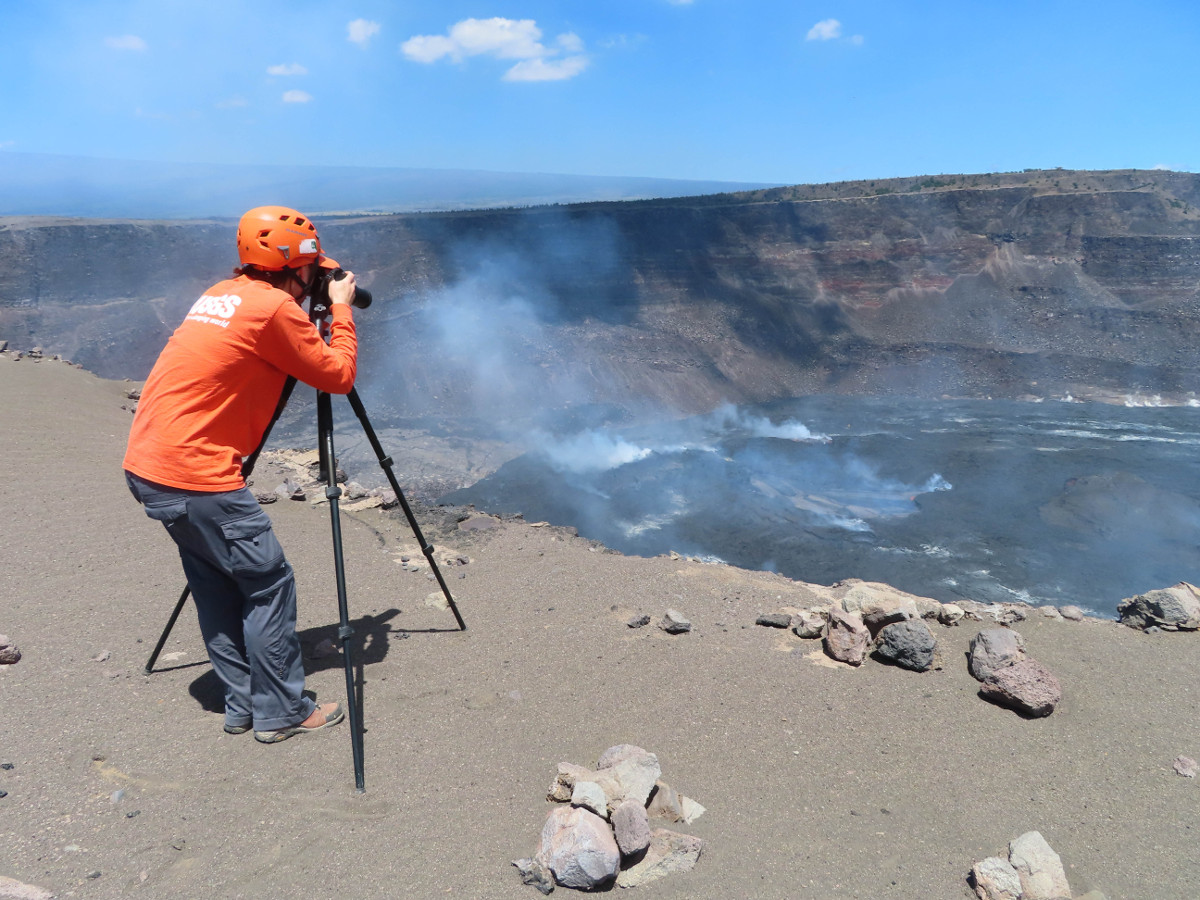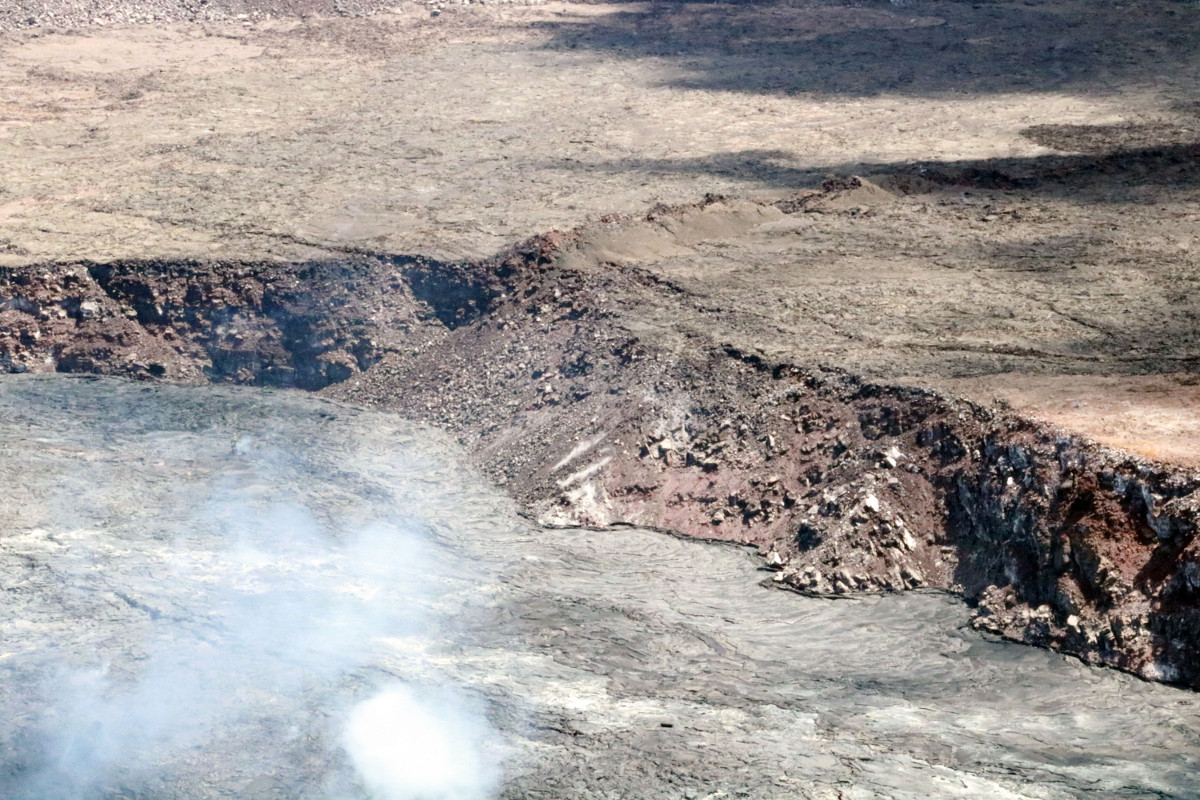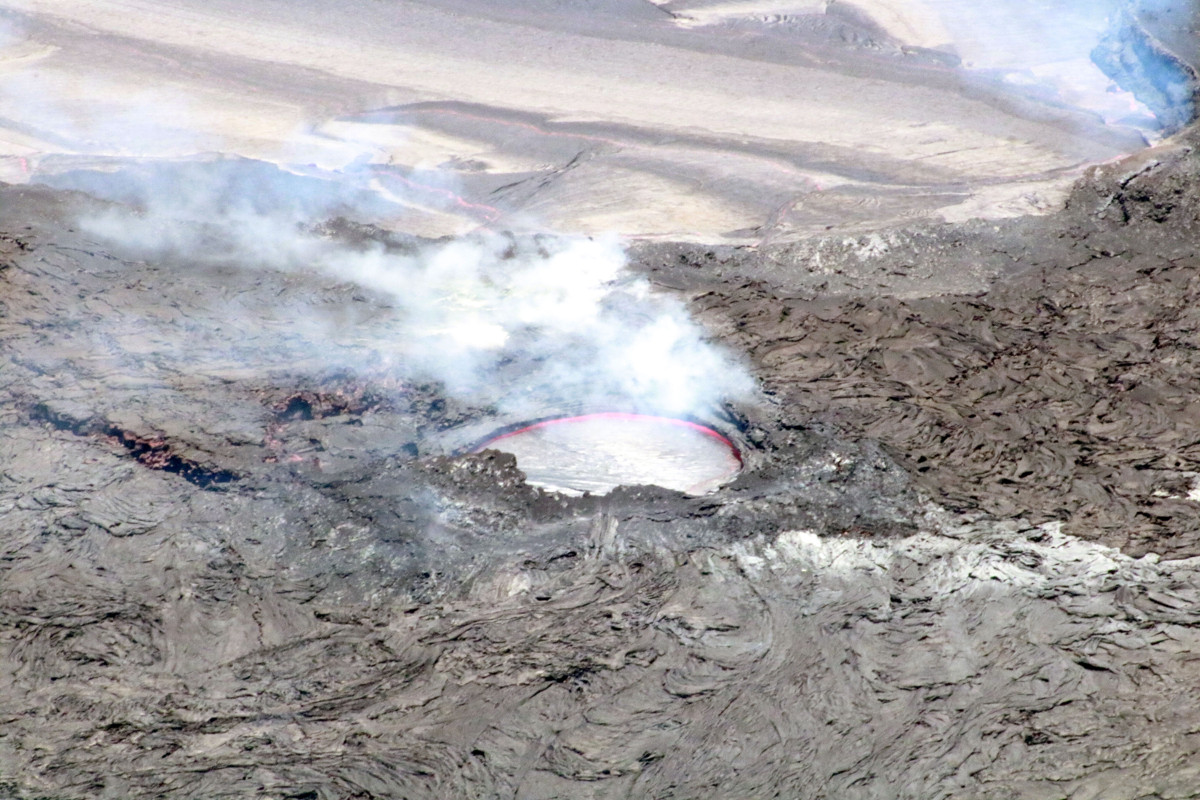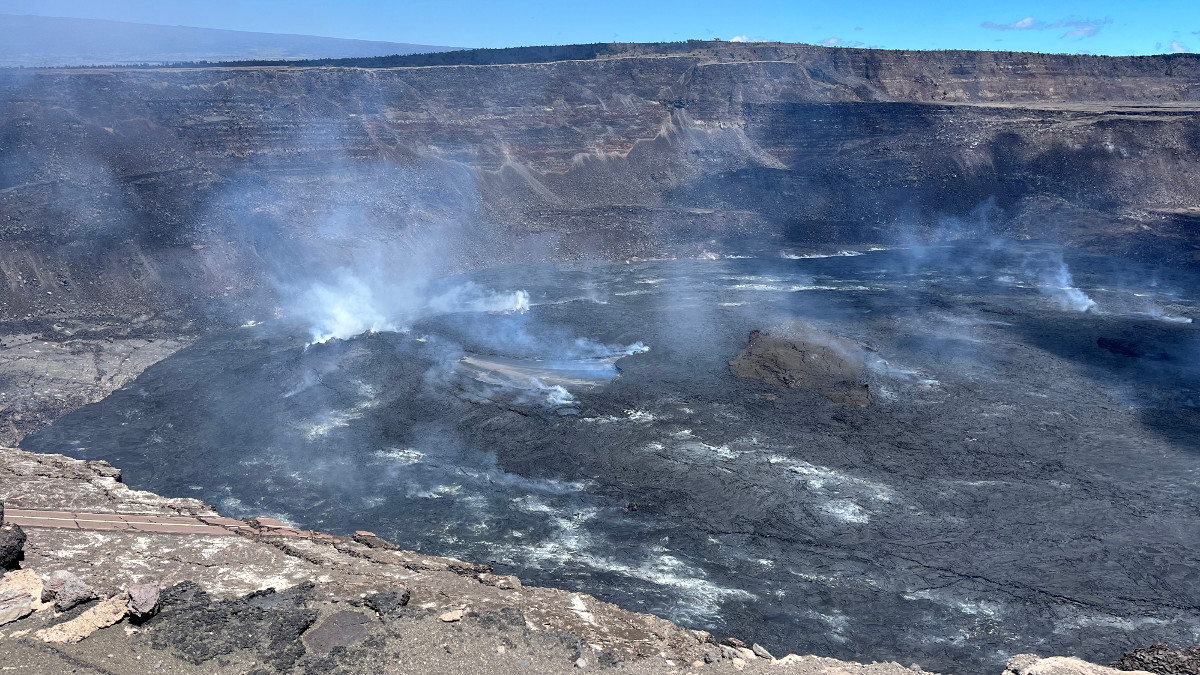
“An HVO geologist uses a telephoto camera lens to document Kīlauea’s summit eruption from the south rim of Halema‘uma‘u on September 2, 2022. The slope of Mauna Loa’s Northeast Rift Zone is visible in the background of the left side of the image, whereas the summit of Kīlauea, at Uēkahuna Bluff, is visible in the background of the right side of the image.” (USGS image by J. Chang)
- The summit eruption of Kīlauea Volcano continued over the past 24 hours. The USGS Hawaiian Volcano Observatory says all recent eruptive activity remains confined to Halemaʻumaʻu crater, and no significant changes have been observed at the summit or in either rift zone.
- The current Volcano Alert Level is WATCH, and the current Aviation Color Code is ORANGE.
- The USGS noted on Sunday that a lava outbreak occurred along the northwestern crater floor margin. It started around 7 p.m. on Saturday and was still active as of Sunday morning.
- HVO scientists posted new photos of the ongoing eruption to the USGS website.

“A telephoto view of the eastern end of Halema‘uma‘u crater floor, where lava flows erupted over the past year intersect the crater wall. The fissure that erupted in 1982 on Kīlauea caldera floor is visible as a ridge-like feature about 130 feet (40 meters) above these lava flows.” (USGS image by K. Mulliken)
From the USGS Hawaiian Volcano Observatory on Sunday:
Activity Summary: The summit eruption of Kīlauea Volcano, within Halemaʻumaʻu crater, continued over the past 24 hours. All recent eruptive activity has been confined to the crater. No significant changes have been observed at the summit or in either rift zone.
Halemaʻumaʻu Lava Lake Observations: Eruption of lava from the western vent into the active lava lake and onto the crater floor continued over the past 24 hours. The active part of the lava lake showed continuous surface activity. An outbreak occurred along the northwestern crater floor margin. It started around 7:00 pm and it is still active this morning. Overflight measurements from August 16, 2022, indicated that the crater floor had seen a total rise of about 137 meters (449 feet), and that 104 million cubic meters (27.5 billion gallons) of lava had been effused since the beginning of this eruption on September 29, 2021.
Summit Observations: Summit tiltmeters recorded relatively little ground deformation over the past 24 hours. Volcanic tremor remains above background levels. A sulfur dioxide (SO2) emission rate of approximately 1,400 tonnes per day (t/d) was measured on August 26, 2022.
Rift Zone Observations: No unusual activity has been noted along the East Rift Zone or Southwest Rift Zone; low rates of ground deformation and seismicity continue along both. Measurements from continuous gas monitoring stations downwind of Puʻuʻōʻō in the middle East Rift Zone remain below detection limits for SO2, indicating that SO2 emissions from Puʻuʻōʻō are negligible.

“South of the active lava lake within Halema‘uma‘u, there is a much smaller lava pond. Lava flows that appear darker grey and shiny around this feature attest to recent overflows. Telephoto image taken from the south rim of Halema‘uma‘u on September 2, 2022.” (USGS image by K. Mulliken)
Hazard Analysis: This eruption at Kīlauea’s summit is occurring within a closed area of Hawaiʻi Volcanoes National Park. High levels of volcanic gas are the primary hazard of concern, as this hazard can have far-reaching effects downwind. Large amounts of volcanic gas—primarily water vapor (H2O), carbon dioxide (CO2), and sulfur dioxide (SO2)—are continuously released during eruptions of Kīlauea Volcano. As SO2 is released from the summit, it reacts in the atmosphere to create the visible haze known as vog (volcanic smog) that has been observed downwind of Kīlauea. Vog creates the potential for airborne health hazards to residents and visitors, damages agricultural crops and other plants, and affects livestock.
Additional hazards include Pele’s hair and other lightweight volcanic glass fragments from lava fountains that will fall downwind and dust the ground within a few hundred meters (yards) of the erupting fissure vent(s). Strong winds may waft lighter particles to greater distances. Residents should minimize exposure to these volcanic particles, which can cause skin and eye irritation.
Other significant hazards also remain around Kīlauea caldera from Halemaʻumaʻu crater wall instability, ground cracking, and rockfalls that can be enhanced by earthquakes within the area closed to the public. This underscores the extremely hazardous nature of the rim surrounding Halemaʻumaʻu crater, an area that has been closed to the public since early 2008.


by Big Island Video News11:06 pm
on at
STORY SUMMARY
HAWAIʻI VOLCANOES NATIONAL PARK - Scientists noted on Sunday that a lava outbreak occurred along the northwestern crater floor margin, and all recent eruptive activity has been confined to Halemaʻumaʻu crater.